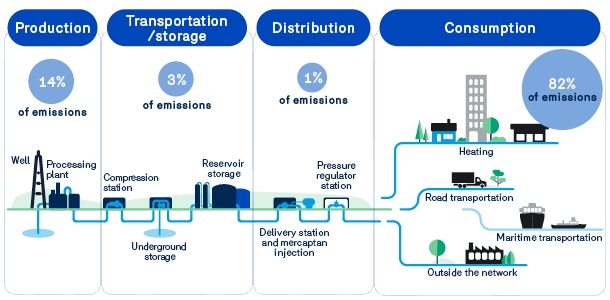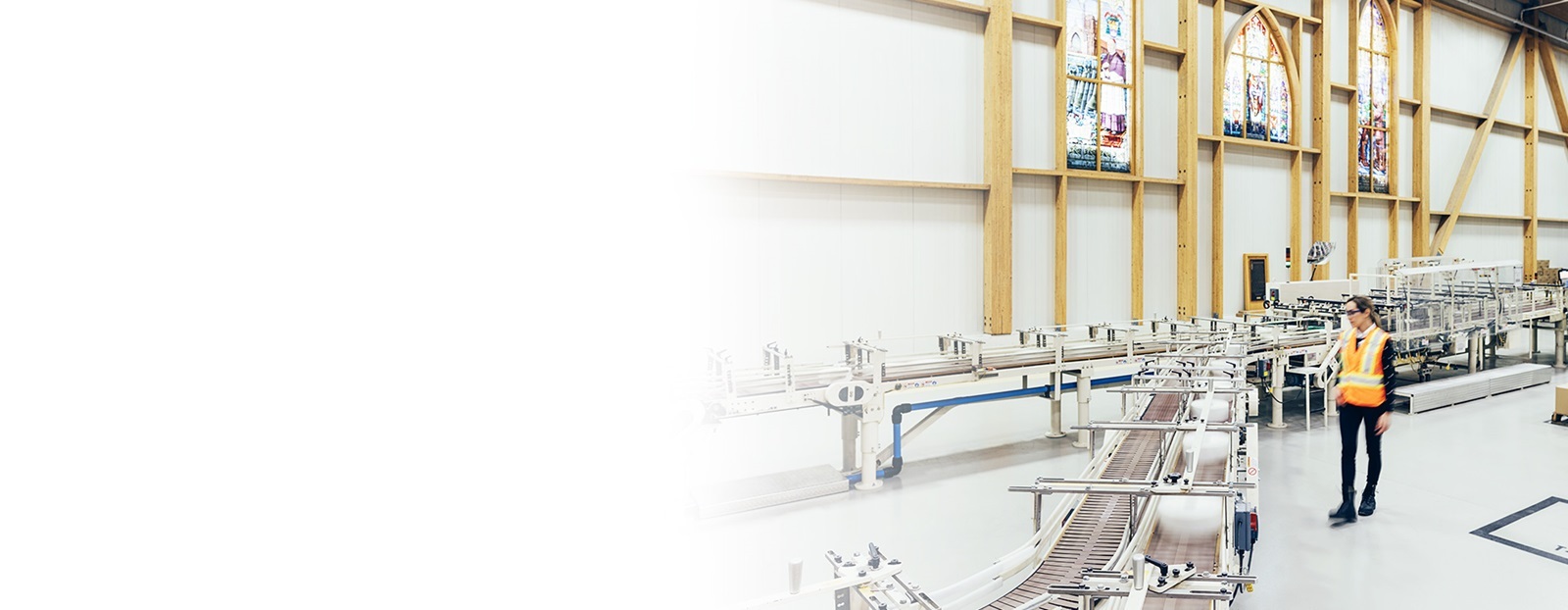Natural gas life cycle analysis - highlights
In an effort to better understand and control its supply chain, Énergir wanted to develop an environmental profile of the natural gas it distributes in Québec using a life cycle approach. To accomplish this, Énergir commissioned the International Reference Center for the Life Cycle of Products, Processes and Services (CIRAIG).
This study was aimed at better understanding:
- The environmental impacts of our supply chain, and more specifically, our greenhouse gas (GHG) emissions
- How the environmental impacts of our supply chain compare to petroleum products for various uses (heating, road transportation and maritime transportation)
- Potential reductions of the environmental impacts of our supply chain
To conduct this study, CIRAIG related on scientific literature, current data and several assumptions in the event that exact data was unavailable.
Here are a few highlights:
- The consumption of natural gas occurs at the life cycle stage with the highest portion of GHG emissions. Upstream production generates approximately 14% of the life cycle's emissions, while the transmission and distribution phases contribute 3% and 1%, respectively.

2. Although it is impossible to determine the exact source of natural gas distributed in Quebec, it is estimated that approximately 80% comes from Alberta and British Columbia. The rest comes from the United States.
3. The fugitive emission rate of natural gas distributed in Quebec, ie losses occurring throughout the supply chain, is estimated to be less than 1%.

4. For all of the uses of natural gas studied (heating, road transportation and maritime transportation), the full life cycle of natural gas generates fewer GHG emissions than petroleum products.
- For example, for heat generation (industrial, commercial, institutional or residential) in an area served by Énergir's distribution network, the GHG emissions generated by natural gas are 32% lower than for fuel oil.
- For other uses of natural gas and for LNG used outside the network, the GHG emissions generated by natural gas are 16% to 32% lower than for petroleum products.
In short, the study confirmed that, based on the parameters analyzed, natural gas is a way to reduce GHG emissions when used as a replacement for petroleum products.
Solutions for reducing our carbon footprint
The study also highlighted possible solutions for reducing the carbon footprint of natural gas by adopting certain procurement practices. Learn more about these 2 practices below.
Choice of producers
Renewable natural gas
Energy efficiency
Choose producers who limit their fugitive emissions
Buying from producers that keep their fugitive emissions below a certain threshold in their supply chain, which would reduce GHG emissions during the production phase.
What is Énergir’s responsible procurement initiative?
See our article in the October 2020 Bulletin to find out more. With this initiative, we can identify producers that meet responsible supply criteria and offer them a premium on the sale of natural gas to Énergir. Similar initiatives may also be implemented for direct-purchase customers.
Increase the portion of RNG in our network
Increasing the portion of renewable natural gas (RNG) in our energy supply to better leverage the environmental advantages of RNG.
- While there are very low GHG emissions associated with its production, distribution and combustion phases, RNG can be considered virtually carbon-neutral, particularly when its entire life cycle is taken into account.
- RNG production can be used to recover biogenic methane emissions generated by normal activities in sectors that produce organic materials.
Help our customers to consume better
Implementing energy-efficient measures for our customers. Although the CIRAIG did not analyze this solution, it could significantly reduce GHG emissions associated with the consumption of natural gas.
Learn more about our energy efficiency programs.
Choice of producers
Choose producers who limit their fugitive emissions
Buying from producers that keep their fugitive emissions below a certain threshold in their supply chain, which would reduce GHG emissions during the production phase.
What is Énergir’s responsible procurement initiative?
See our article in the October 2020 Bulletin to find out more. With this initiative, we can identify producers that meet responsible supply criteria and offer them a premium on the sale of natural gas to Énergir. Similar initiatives may also be implemented for direct-purchase customers.
Renewable natural gas
Increase the portion of RNG in our network
Increasing the portion of renewable natural gas (RNG) in our energy supply to better leverage the environmental advantages of RNG.
- While there are very low GHG emissions associated with its production, distribution and combustion phases, RNG can be considered virtually carbon-neutral, particularly when its entire life cycle is taken into account.
- RNG production can be used to recover biogenic methane emissions generated by normal activities in sectors that produce organic materials.
Energy efficiency
Help our customers to consume better
Implementing energy-efficient measures for our customers. Although the CIRAIG did not analyze this solution, it could significantly reduce GHG emissions associated with the consumption of natural gas.
Learn more about our energy efficiency programs.
What about your company?
To find out more, see the summary (in French) of the CIRAIG study andfull study (in French) .
Your Advisor, Sales Major Industries can also put you in touch with our sustainable development expert to answer your questions about the natural gas life cycle analysis and explore avenues for your company to reduce its GHG emissions.
Read the other subjects from this bulletin
Solar Preheating - case study
Natural gas price outlook
Changes in the Major Industries sales team
News about the C&T market
